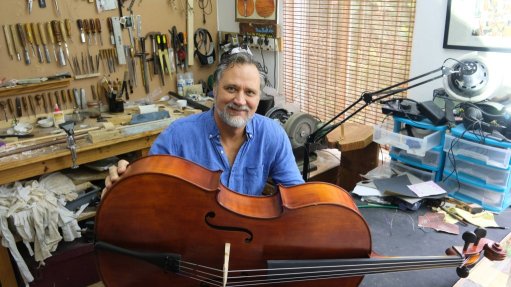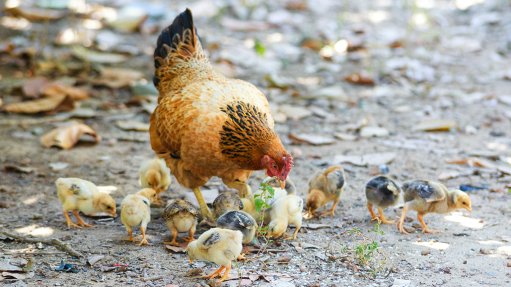SA’s bioeconomy should be multipronged
The fact that South Africa does not have a White Paper or a holistic bioeconomy strategy is the biggest of ironies, given that a vast variety of biological life and biodiversity can be found across the country. This is a sector with the highest labour intensity.
The aggregate value of the bioeconomy is hard to estimate, given that the use values of this natural resource base are fragmented along sectoral statistics. These statistics have to also take into account the nonconsumptive uses of the bioeconomy.
South Africa’s biodiversity is plush and exists beneath the soil, above it and in the sea. It is large and small in scale. It comprises animals, plants and microbes. And there are many components of this natural resource that are unique; the fynbos is a case in point.
The increase in the production of microgin distilleries is an illustration of how the combination of our unique flora with innovative entrepreneurship has enabled a novel gin industry to blossom, becoming a new source of gin for global markets.
The gin’s unique characteristic is further enhanced through aesthetic creativity in its packaging and drawing on the natural elements that South Africa’s biota is endowed with, which provide a new array of tastes and marketing angles, playing on unique geography, soils and flora.
South Africa’s biodiversity policy and regulations recognise the economic value of biodiversity. The policy framework also enshrines the notion of fair and equitable access.
The bioeconomy can involve overlapping definitions or simply be narrowed to forms of economic activity, where reliance is placed on nature itself, producing abundant goods and services that we need with little human intervention.
But this in itself obscures the fact that most of our natural habitats and naturally produced goods and services now involve one form of human intervention or another. This may involve the planning of such spaces, the use of technology or the introduction of techniques for mass production, as is done for certain types or natural products and medicinal plants.
Conventional forms of economic use involve the exploitation of natural habitats and the wildlife within them. Here, one thinks of nature-based tourism, the exploitation of specific species of flora and fauna, wildlife farming and hunting.
Things become a little trickier if you consider that elements of the agriculture sector that derive economic value from nature, such as the production of honey, as well as the production of Rooibos tea from fynbos, are classified as agricultural activities rather than the natural products industry.
It is quite clear how complicated definitional issues become, and the idea of natural versus nurtured begins when considering a bioeconomic activity.
Perhaps, for now, we may want to leave out traditional agriculture and animal husbandry and focus on those bioeconomy aspects where what nature provides exists as a comparative advantage if the flora and fauna is unique to our own shores.
Concepts do matter because they influence the way we think of things – either as independent parts or as parts of a whole. This is why the idea of a bioeconomy may assist in uniting disparate initiatives under a common umbrella and getting the boost that the natural industries sector needs to flourish.
South Africa’s natural products industries, including the use of bioengineering, remains an under- developed and untested sector. There is a significant need for research and development (R&D) spend in this sector that exploits both traditional and new technology spectra to facilitate the development of novel product lines and value chains.
The bioeconomy may be usefully thought of as a cluster moving from low-end goods and services to high-end products that are embedded in R&D intensity, new types of enterprises and exports. The inevitability of this is that a variety of new technolo- gies, such as informatics and three-dimensional (3D) printing, should enhance the discovery of new product lines.
Consider, for instance, the problem of rhino poaching for rhino horns – these days, DNA sequencing, genetic engineering and 3D printing make it possible to produce artificial rhino horn that is very difficult to distinguish from the real product.
South Africa has all the ingredients to scale new heights in the bioeconomy sector, but this will require vision, focus and good coordination between government, public research institutions and innovative entrepreneurs who are willing to take new bets and risks.
Coordination allows both the public and private sectors to gain visibility of the options that are available and to enter new areas of product innovation with a lot more rigour.
Product innovation takes time, especially in the natural products sector. There are many hurdles to cross, but these are fewer in the production of natural products than in the domain of finished goods meeting market standards and gaining market acceptance.
A bioeconomy strategy allows strategic options to be examined more rigorously and guides future public and private spend. This, in turn, will influence the type of R&D that needs to be done and the parts of the ladder, within the global value chain, we could occupy. For instance, is it is better to throw money at bamboo production instead of something else, given how much of a lead and comparative advantage Asian countries enjoy in the use of bamboo as a versatile plant for all sorts of things.
The bioeconomy embraces both low-end extractive-type economies and high-value, modern and highly industrialised economic activity – these should be combined as one holistic cluster to maximise our comparative advantage.
Article Enquiry
Email Article
Save Article
Feedback
To advertise email advertising@creamermedia.co.za or click here
Comments
Press Office
Announcements
What's On
Subscribe to improve your user experience...
Option 1 (equivalent of R125 a month):
Receive a weekly copy of Creamer Media's Engineering News & Mining Weekly magazine
(print copy for those in South Africa and e-magazine for those outside of South Africa)
Receive daily email newsletters
Access to full search results
Access archive of magazine back copies
Access to Projects in Progress
Access to ONE Research Report of your choice in PDF format
Option 2 (equivalent of R375 a month):
All benefits from Option 1
PLUS
Access to Creamer Media's Research Channel Africa for ALL Research Reports, in PDF format, on various industrial and mining sectors
including Electricity; Water; Energy Transition; Hydrogen; Roads, Rail and Ports; Coal; Gold; Platinum; Battery Metals; etc.
Already a subscriber?
Forgotten your password?
Receive weekly copy of Creamer Media's Engineering News & Mining Weekly magazine (print copy for those in South Africa and e-magazine for those outside of South Africa)
➕
Recieve daily email newsletters
➕
Access to full search results
➕
Access archive of magazine back copies
➕
Access to Projects in Progress
➕
Access to ONE Research Report of your choice in PDF format
RESEARCH CHANNEL AFRICA
R4500 (equivalent of R375 a month)
SUBSCRIBEAll benefits from Option 1
➕
Access to Creamer Media's Research Channel Africa for ALL Research Reports on various industrial and mining sectors, in PDF format, including on:
Electricity
➕
Water
➕
Energy Transition
➕
Hydrogen
➕
Roads, Rail and Ports
➕
Coal
➕
Gold
➕
Platinum
➕
Battery Metals
➕
etc.
Receive all benefits from Option 1 or Option 2 delivered to numerous people at your company
➕
Multiple User names and Passwords for simultaneous log-ins
➕
Intranet integration access to all in your organisation


















